Olde Western Avenue, complete with extra ‘e’, is a former alignment of Western through Blue Island. This section, from Grove Street to 135th place, was re-routed in 1964 when a new span opened over the Cal-Sag channel and Rock Island tracks. Other than the removal of the old bridge, Old Western remains as a slightly out of the way commercial street.
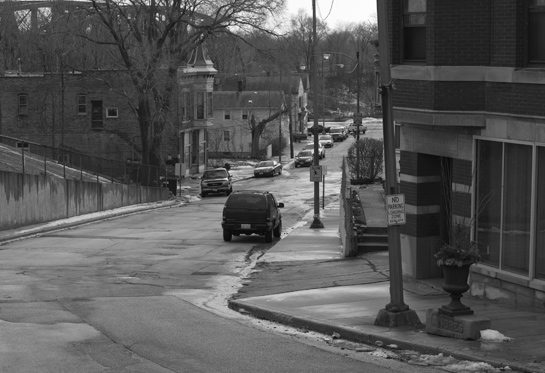
Western avenue is one way south through the main business district of Blue Island. Old Western splits off from regular Western slightly westbound down a small hill. This is a view south of the northern section of Old Western. It has less commercial development than its southern counterpart, as we’ll see.

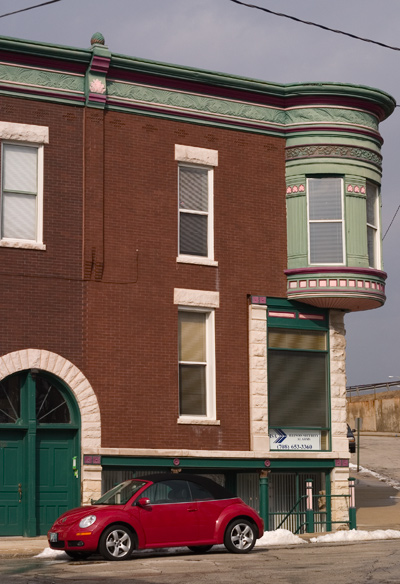
These brick store-and-flat buildings stand at the base of the hill. They are currently very well kept, which is the case for most historic buildings on Western avenue in Blue Island. The building at right features a vibrant paint job and intact cornice. The exterior looks as good as new. As for the interior, the turret probably offers great views of…’new’ Western Avenue.
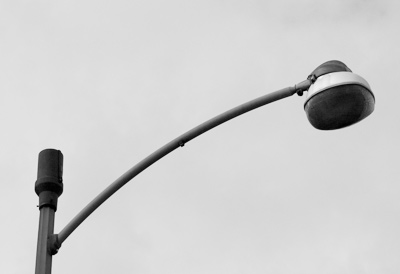

Left: Blue Island still has some Mercury vapor streetlights mixed in with the ubiquitous Sodium vapor lights. In Chicago proper, working Mercury lights can only be found in the occasional park, however, they still often line streets in outlying municipalities. In Chicagoland, they are often easily identifiable in this gumdrop shape, in opposition to the cobrahead Sodium fixtures of the same period. The light quality also contrasts with Sodium lights, which are a heavily saturated yellow. Mercury vapor have a distinctive bluish glow that provide interesting visual effects to human bodies.
Right: Erkert Bros is not on Western proper, but a few feet west on Grove street. We quite liked this sign, which is on the side of the building.
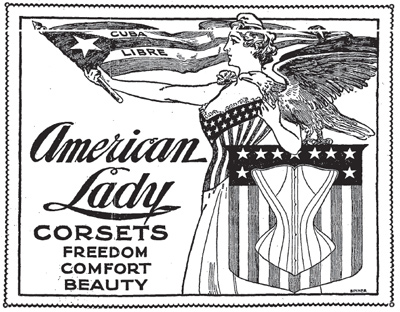
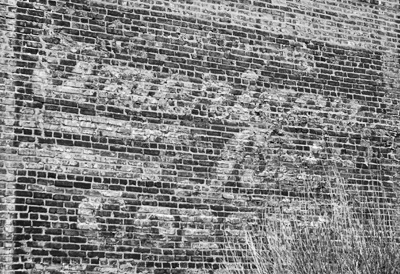 Left: Chicago Tribune
Left: Chicago Tribune
This well-faded ghost ad for Detroit-based American Lady Corsets speaks not just for a long-gone company, but also for a long-gone garment. Well, not quite. Corsets are still manufactured, although they seem to be a niche product. They went out of fashion with most American ladies in the mid-1920s, in favor of less restrictive clothing. Forgotten Chicago writer Corinne Aquino, upon coming across this ad, expressed her opinion that these should never come back into fashion.
The advertisement at left is from an 1898 issue of the Chicago Tribune. This is a striking piece of overt propagandistic advertising, in support of the Cuban cause in the Spanish-American War. Depicted here is Liberty, the female personification of the United States, flying a Cuban flag while an eagle stands fast beside her. All while wearing a star-spangled American Lady corset!

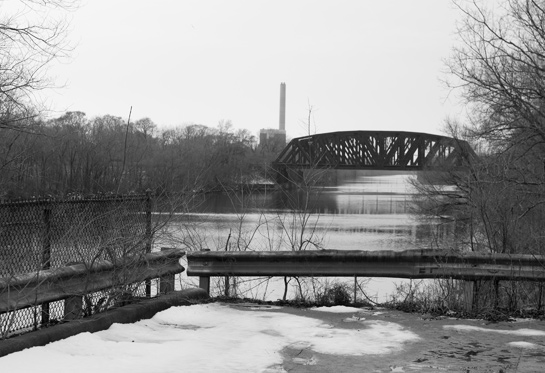
Left: This two story store and flats building houses an antique shop. It is a perfect example of the type of business that has existed on this stretch of Western in the post-shopping mall era. In order to remain viable, businesses on traditional main streets often offer a different retail experience than the large regional mall, rather than compete directly. Antique shops, restaurants, and bars are common types of business located in such districts.
Right: View west along the Cal-Sag channel from where the old bridge once stood. There are seven rail bridges over the channel in Blue Island, some of which can be seen in the distance.
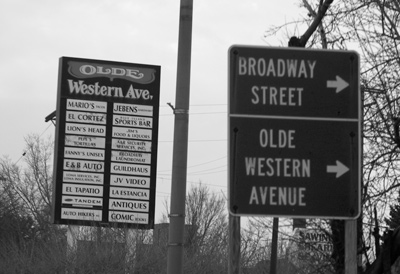
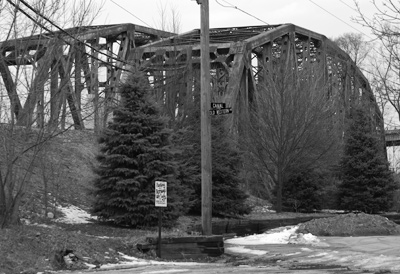
In some ways, Old Western is analogous to a strip mall. It is separated from large main street, with ample space for parking. A number of related businesses are listed and united under a common name and theme. One can also draw a parallel between Old Western and Lincoln Avenue in Lincoln Square, which was closed to through traffic and effectively turned into a pedestrian mall, although the motivations for each were entirely different.
Right: These dual rail bridges, constructed in 1964, occupy the space where the old Western bridge stood. This is a view northeast, the old bridge would have gone directly north, to the left of the image.
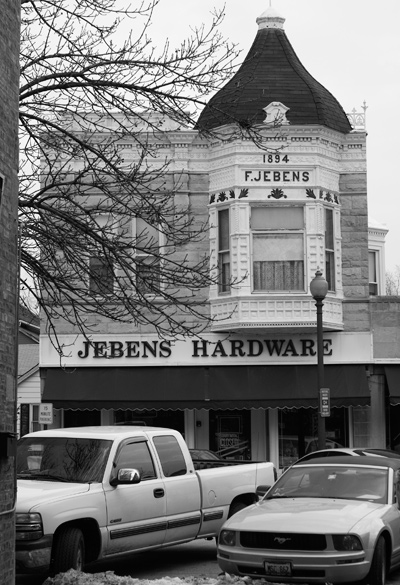
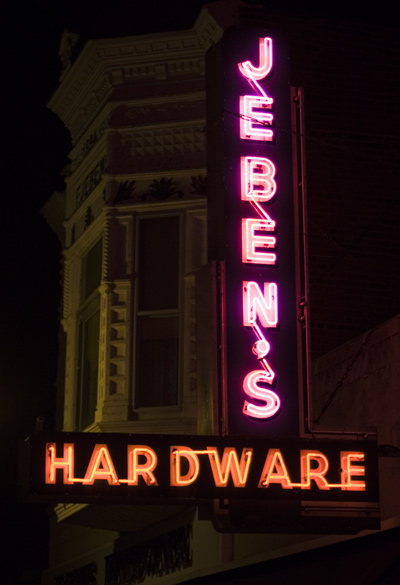
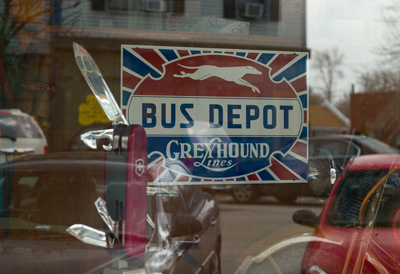
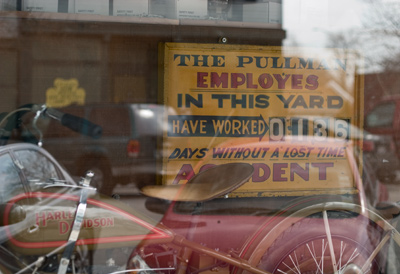
The Greyhound sign is a reminder of how the company once had decent service, and decent graphic design. Their current logo is the result of a number of Photoshop filters combined with bad taste, and it looks even more pixelated/artifacted on buses! Is it supposed to look cheap? We won’t even describe the experience of traveling on one of these buses…just don’t sit anywhere near the toilets.
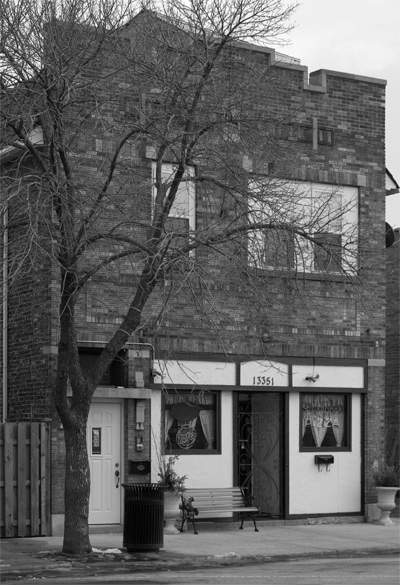
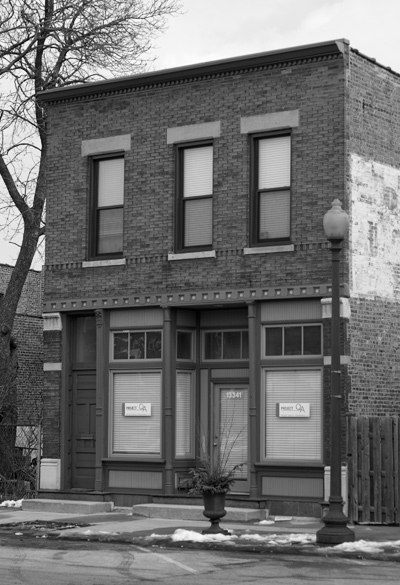
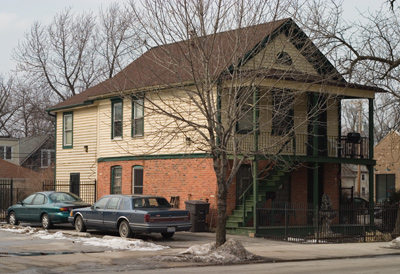

Some residences on Old Western. The house at right is similar to most of Blue Island’s housing stock, which is mostly comprised one story frame single family residences. This one, however, based on location and appearance, is likely older than most houses in Blue Island.

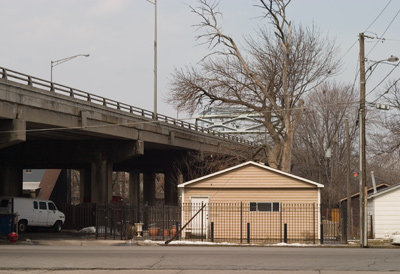
This sign lets the motorist know the way to the bridge. It was probably more relevant in the decade after the new bridge was erected. Slightly east of Old Western, the new bridge is seen flying over some backyards in the right image.
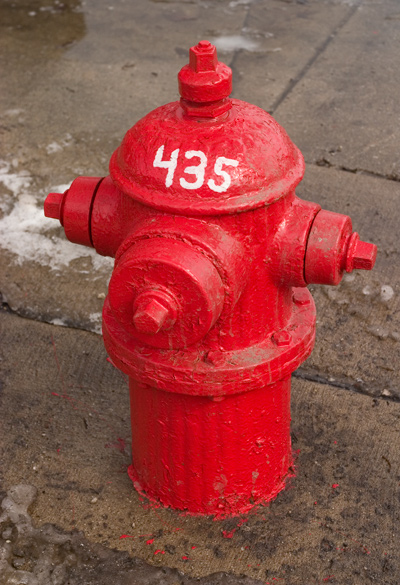
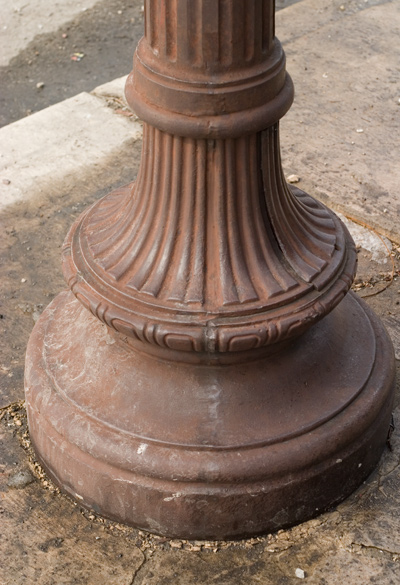
Two examples of the street furniture which lines the southern part of Old Western. These fixtures, in addition to the classic stop light, add to the old-time small town feel that is part of Old Western’s draw. However, we aren’t sure if these streetlight bases are original, or replicas. Is it a ye olde streetlight intended to invoke a past gone by?


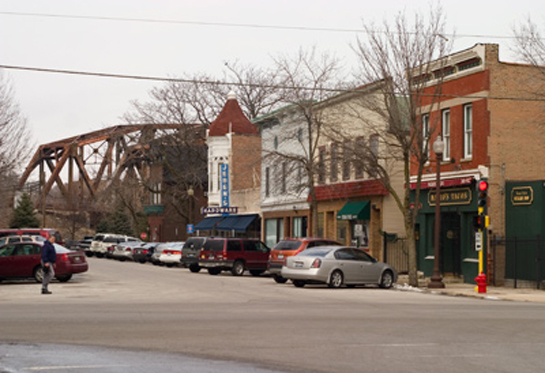
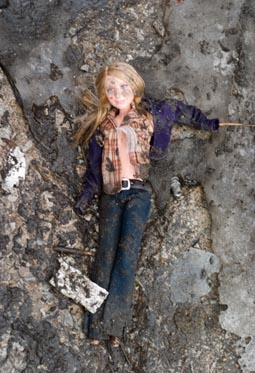
Left: A view north toward the heart of Old Western.
Right: During one of our visits, we found this Mary-Kate / Ashley Olsen doll passed out in a gutter, apparently having far too good of a time in Blue Island.
- South Western Avenue Improvement
- Lake Shore Drive Redux
- Bridge Out For Good
- B&O’s Original Chicago Entry
- The More Things Change



